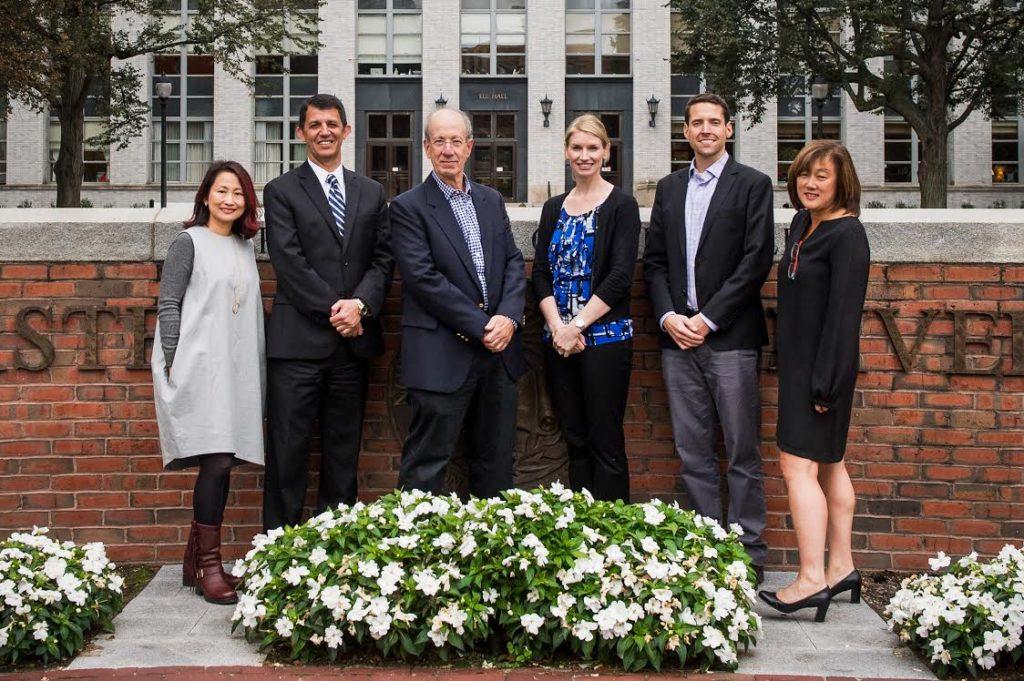By Rowan Walrath, managing editor
Two grants will help establish a research center led by Akmar Alshawabkeh at Northeastern University’s College of Engineering (COE), in Puerto Rico over the next few months.
The Center for Research on Early Childhood Exposure and Development (CRECE) will expand on the Puerto Rico Testsite for Exploring Contamination Threats (PROTECT) on the northern shore of the island. The National Institutes of Health (NIH) provided $2.9 million, and the Environmental Protection Agency (EPA) is expected to provide $2.1 million in a few weeks.
“Since 2010, Akmar Alshawabkeh at COE has been co-director of a birth cohort study called PROTECT,” Rachel Grashow, a senior research scientist on Alshawabkeh’s PROTECT team, said. “It’s centered in Puerto Rico, where there’s widespread contamination of the water, and Puerto Rico also has an incredibly high preterm birth rate. The idea was they started this birth cohort study… but PROTECT only follows pregnant women through birth, and then the study stops.”
CRECE, which is Spanish for “grow,” aims to bridge the gap between the two studies. While PROTECT fails to collect data on the aftereffects of contaminants on developing children, CRECE will do just that. The program will study how pollutant expo-sure and psychosocial risk factors impact the health and development of chil-dren living on the island’s heavily polluted northern coast.
According to the EPA’s website, Puerto Rico has 40 waste site cleanup programs. Its preterm birth rate is among the highest in the world – 15.1 per-cent, according to a 2014 report by March of Dimes.
“We’re really studying on an island that is disproportionately impacted by environmental contamination, and there’s a major health disparity,” Alshawabkeh, the George A. Snell Professor of Engineering at Northeastern and co-leader of both CRECE and PROTECT, said. “We want to understand how much environmental contamination is a factor… [We’re] learning more about making the community healthier and providing some community engagement.”
According to Alshawabkeh, tax breaks over the past 50 to 80 years caused an industrial explosion on the island, but waste dumping was not controlled. Additionally, instead of sand, much of the island is composed of limestone, which has less of a filtering effect, allowing contaminants to stay ashore. Contaminants and other factors have led to a high level of health-related issues such as asthma and premature birth rates, Alshawabkeh said.
Northeastern, the University of Michigan, the University of Georgia and the University of Puerto Rico are all involved with both PROTECT and CRECE.
Jose Cordero, the Patel Distinguished Professor in Public Health at the University of Georgia, co-leads both centers with Alshawabkeh. The centers also include collaborations with EarthSoft, Inc., an environmental data management company, and the Silent Spring Institute, a nonprofit partnership of scientists and citizens concerned about environmental links to breast cancer.
“No. 1, we will be able to look at issues of neurodevelopment,” Cordero said. “That is actually a new way of measuring a neurological deficit in some of these children. Second, we’ll be taking some physical measures… of the impacts on boys and girls. Third, it’s going to give us an opportunity to look at very early sides of neurodevelopment deficits in these children.”
Phil Brown is a co-leader of the program’s community outreach and translation core. He is in charge of relating the program’s findings to the Puerto Rican community.
“When the children’s data is obtained, we find out what they’re exposed to, what kind of air pollution, what kinds of phthalates, [and] we report that to their parents [and] tell them how they might reduce those exposures,” Brown said. “If they have high levels of phthalates, we can tell them things to avoid, products that they buy and how they use those products.”
Brown said that CRECE also intends to provide general resources to families and healthcare professionals.
In addition to providing general brochures and pamphlets, CRECE will be holding community meetings in Puerto Rico where researchers provide aggregate data. According to Brown, they are committed to giving information to those who might not have another way to access it.
“We are going to give information back to government agencies,” Brown said. “It turns out that there isn’t a lot of information known about contamination in Puerto Rico, especially contamination that winds up in people’s bodies… There’s been very little research to find out how that gets into people’s blood and urine and the air and dust in their homes.”
According to Grashow, the grants are vital to the the team’s research.
“We can’t do it without the funding, obviously,” Grashow said. “The grants will enable us to follow the children born in the cohort study… so it’ll allow us to answer the question of whether environmental contamination affects infant and child development.”
Photo courtesy Adam Glanzman, Northeastern University









